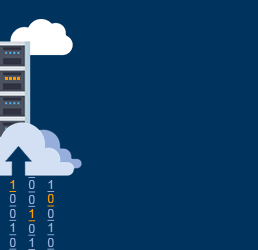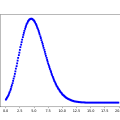New on LowEndTalk? Please Register and read our Community Rules.
All new Registrations are manually reviewed and approved, so a short delay after registration may occur before your account becomes active.
All new Registrations are manually reviewed and approved, so a short delay after registration may occur before your account becomes active.
LEBRE-X Review: Nexus Bytes VPS
The first LEBRE Xtended review is out for Nexus Bytes. A total of 33 days of benchmark data measuring CPU/RAM, disk and network performance was used to create charts and compute descriptive statistics to provide insights into the real-world reliability of Nexus Bytes. Read it here: https://lowendboxes.review/lebre-x-nexus-bytes-ryzen-nvme-vps/
Long story short: the actual performance is on par with what's promised on paper.
I have similar amounts of data for VPSes from another three more white-listed providers, which will be progressively released in the coming weeks.

















Comments
Just to echo what I said on the other forum,
Thanks for your kind words and detailed feedback. Really appreciate it.
End of the day, I am just happy knowing my family members got what they paid for and some more and they are happy
When you will be expanding to APAC location boss ? @seriesn
Boss, Just trying to avoid being yet another ovh host, unless I can get a decent bandwidth pricing, that doesn't route back from LA. It is in the pipeline but no ETA yet
The iperf3 numbers are definitely in bytes and not bits? Iperf defaults to bits.
If you did read, all the units were spelled out.
Potassium-Ion batteries will power the world before bandwidth in Australia is priced decently..
It's called confirmation, which is why I specifically said bytes in my question. I did read and questioned it since you'd have to do an extra conversion and lose granularity (speeds are generally reported in bits, not bytes). So it seems wrong and pointless. Next time, just say, "yes, I intentionally changed format to bytes", otherwise it just looks like you didn't read and gave a snarky response.
Try giving that response when one of your academic colleagues are reviewing your results and asks a question, see how much/little they'll think of your attitude after that.
I am very sure the granularity of a few bits out of a variable measured in hundreds of thousands or millions of bits makes a big difference. Also, this is written for a general audience.
I have little patience for people who do not read and ask questions where the answer is already given. If you seek to be spoonfed, I will treat you as a kid. Academics are pedants who read every single word and no academic will ask such a noob question.
Peer-reviewed low end journal.
Try not giving a frak about what others think of your insert whatever here, see how easy life is then.
Although I’m using shared hosting but server is pretty good and up ..
my vote for you +1 (Nexus Bytes)
By "researchers" with self-anointed credentials. I am pretty sure that engineers wouldn't have been able to build any shit insisting on the granularity of the value of pi.
I'm confused, did you record results in Megabits (iperf3 default output format) or Megabytes? Your graph says Megabytes and you just said bits. Your units are in Megabytes converting to bits is 8X different, not "a few bits". This isn't about precision, this is about being wrong by a factor of 8X if you got Megabit results and representing as Megabytes.
I'm not saying you have it wrong, simply there's a potential because Megabytes units is a deviation from default setting and asking for confirmation. I see three possibilities:
1) you ran iperf3 with format option to record results in Megabytes and graph is correct.
2) you ran iperf3 with default format and manually divided by 8 and plotted the graph and graph is correct.
3) you ran iperf3 with default format and have wrong results by 8 times. Corrective action changing graph from Megabytes to Megabits.
"Note that we present our date in megabytes per second."
Having now re-read your review, this implies you are intentionally representing the data in Megabytes, I just don't know why. But whatever, I'm lazy.
That's the sound of the penny dropping..
@seriesn is the boss.